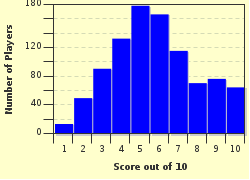Quiz Answer Key and Fun Facts
1. A tissue is defined as a group of similar cells that work together to carry out a certain specialized function. There are four basic types; muscle, nervous, connective, and of course epithelial. Which of these options defines (vaguely) epithelial tissue?
2. Epithelial cells have different surfaces which have different functions. Which of these surfaces do you think would contain the intraepithelial cell junctions?
3. Cell junctions are between epithelial cell neighbors, and are points of contact between their plasma membranes. Which of these junctions do not consist of a protein called plaque?
4. The basement membrane consists of two layers: which of them is closest to the epithelium, the basal lamina, or the reticular lamina?
5. Epithelial tissue is avascular, i.e. it does not have its own blood supply.
6. There are many different classifications of covering and lining epithelial tissue, based on both the shape of the cells, and also on the arrangement of the cells in their layer(s). Which of these is the correct classification for cells that are flat and thin (like floor tiles)? [NB: These are all classifications used for cell shapes in epithelia.]
7. The second type of classification for covering and lining epithelium [the arrangement of cells within their layer(s)] has three types: simple, stratified, and pseudo-stratified. Which of them contain(s) only one layer?
8. Can you take a guess at which of these body parts would have stratified squamous epithelia?
9. Glandular epithelium, as the name suggests, forms the secreting portions of both endocrine and exocrine glands. Which of these is a type of unicellular exocrine gland, which, instead of having a duct like multicellular exocrine glands, secretes mucus directly onto the apical surface of the epithelium?
10. Bone is an epithelial tissue.
Source: Author
reeshy
This quiz was reviewed by FunTrivia editor
crisw before going online.
Any errors found in FunTrivia content are routinely corrected through our feedback system.

